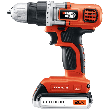Simply put, insulating an attic is an extremely important aspect of making sure that your home is energy efficient. Even if you aren't interested in creating a completely energy efficient, the lowered utility bill associated with insulating an attic properly should be fairly attractive. While insulating an attic is rather time consuming (taking about 10 hours for the novice do-it-yourself enthusiast), it is definitely something that you can and should do yourself. By doing this rather simple task yourself, you can save yourself quite a bit of money than if you had hired someone else to do the work for you. Just make sure that you follow these guidelines.
Materials:
- Tape measure
- Utility knife
- Extra blades for utility knife
- Staple gun
- Lots of staples for staple gun
- Straightedge
- Particle resistant dust mask
- Safety glasses
- Gloves
Procedure:
- Check your existing insulation and ventilation. Prior to laying down any new insulation, you need to check the depth of your current insulation. Most insulation is only going to be about four inches thick, but the biggest area to check lies in between the floor joists of your attic. The insulation itself should be between 15 to 23 inches wide, since the spacing for most floor joists will be between 16 and 24 inches. At the same time that you are checking the depth of your insulation, take the time to look at the ventilation needs of the attic. If you are lucky, you already have all the ventilation that you need, but if not you may want to install a couple of soffit vents to ensure that you have proper air flow through the attic.
- Measure and cut edge insulation. Take the measurements that you wrote down earlier for the depth of your insulation, and purchase the insulation you will be laying down. Unroll some of the insulation and cut it to the proper size for the edges of your attic, basically where the attic baffles are. Take the time to go ahead and cut the insulation for all the baffles at this time, so that you can install them all at once.
- Block off all the vents. Once you have measured, cut, and installed all of the insulation for the baffles, it is time to block off any vents that you may find. By blocking off the vents, you will be able to avoid any insulation from getting into the vents and causing later moisture problems. Blocking pretty much means that you are ensuring no insulation is covering the mouth of the vents.
- Roll out the insulation. If you purchased the correct width of insulation you should have a fairly easy time of rolling it out. Simply place one end of the roll of insulation near the edge of the joists and push the roll away from you. The roll of insulation should unravel and roll towards the opposite side of the room. Cut off any remaining extraneous insulation and use it for the next section of the attic floor. Use the staple gun to attach the fly strips on the sides of the insulation to the floor joists. Repeat as necessary until you have laid out all of the insulation.
- Make room for electrical features. Be aware that as you are laying out the insulation you will need to work around any electrical features that you come across. On the average you do not want electrical features to come into contact with insulation since it could become a fire hazard. Check with your local regulations to see how much space should be left around each of the electrical features, and cut away that much insulating material around them. Usually three inches will work just fine, but double check with your local codes anyway to be on the safe side.
Author Bio
Lee Wyatt
Contributor of numerous Tips.Net articles, Lee Wyatt is quickly becoming a regular "Jack of all trades." He is currently an independent contractor specializing in writing and editing. Contact him today for all of your writing and editing needs! Click here to contact. Learn more about Lee...
Creating a Home Recycling Center
Whether you are looking to save some money, or you want to become more environmentally conscious, creating a home ...
Discover More
Understanding the Basic Soil Types
One of the keys to getting really good at gardening or landscaping is that you need to know what type of soil you are ...
Discover More
How to Replace Struts
Next to a shock absorber, one of the more common parts that need to be replaced on your vehicle is the struts. While you ...
Discover More
More Home Improvement Tips
Replacing an Electric Water Heater
Once you've ruled out the possibility of repairing your heater, and you realize that it's time to replace it, look for an ...
Discover More
Replacing a Thermostat
Although replacing a thermostat is a relatively simple task, it can be quite dangerous since you're dealing with ...
Discover More
Checking for and Eliminating Drafts
An easy way to check to see where a draft is coming from is to stand with a lighted candle next to a window or door. The ...
Discover More

Comments